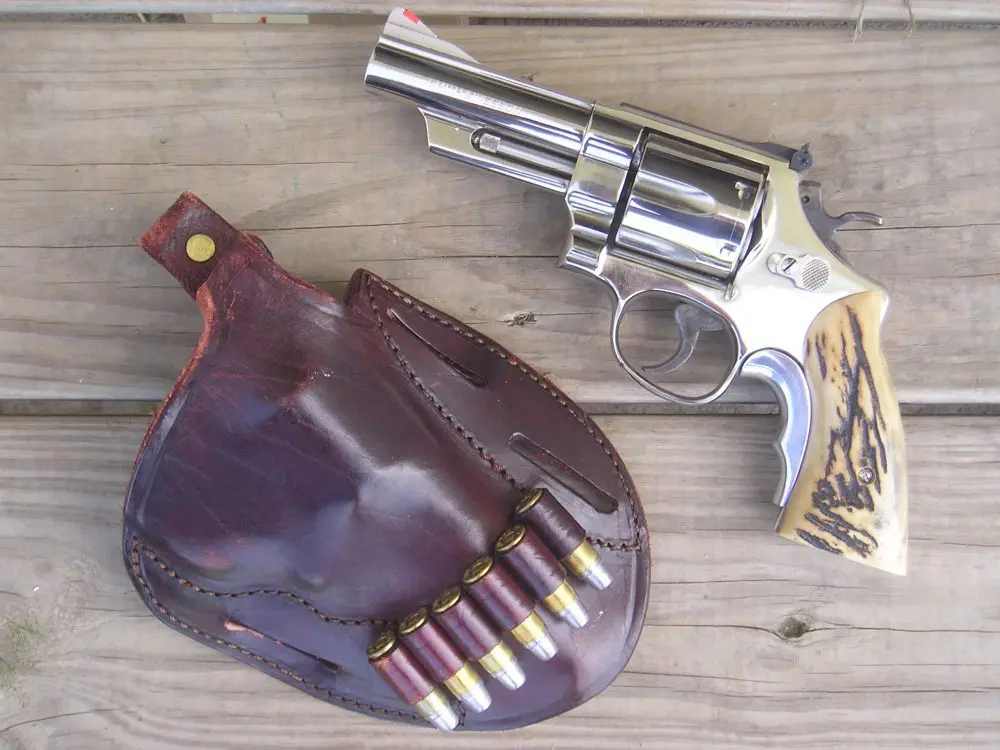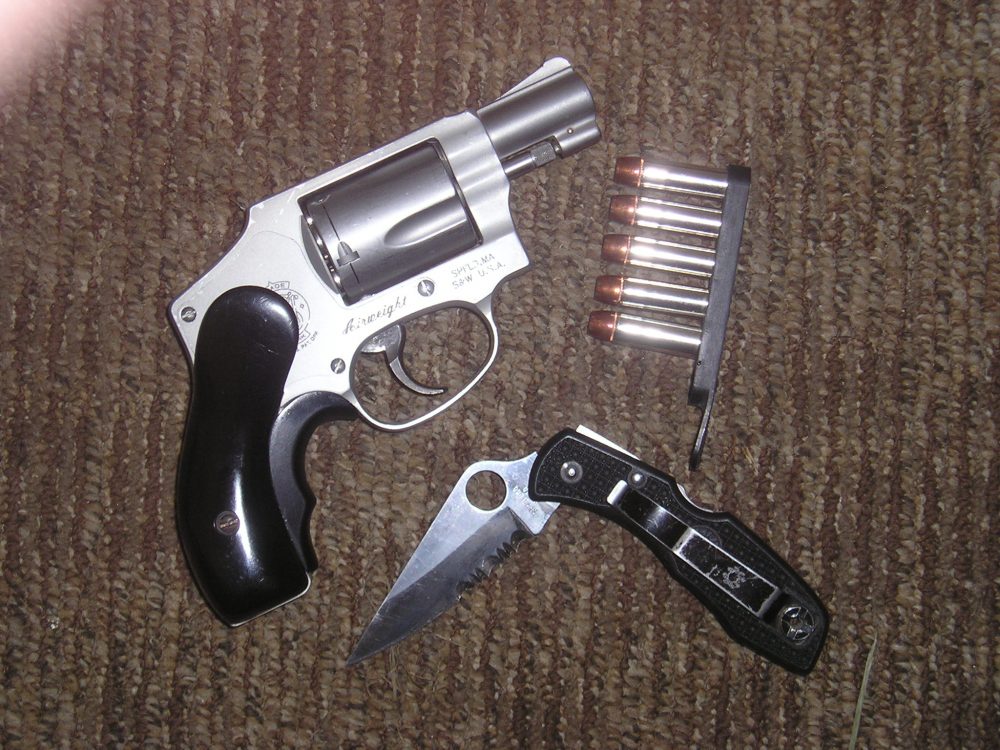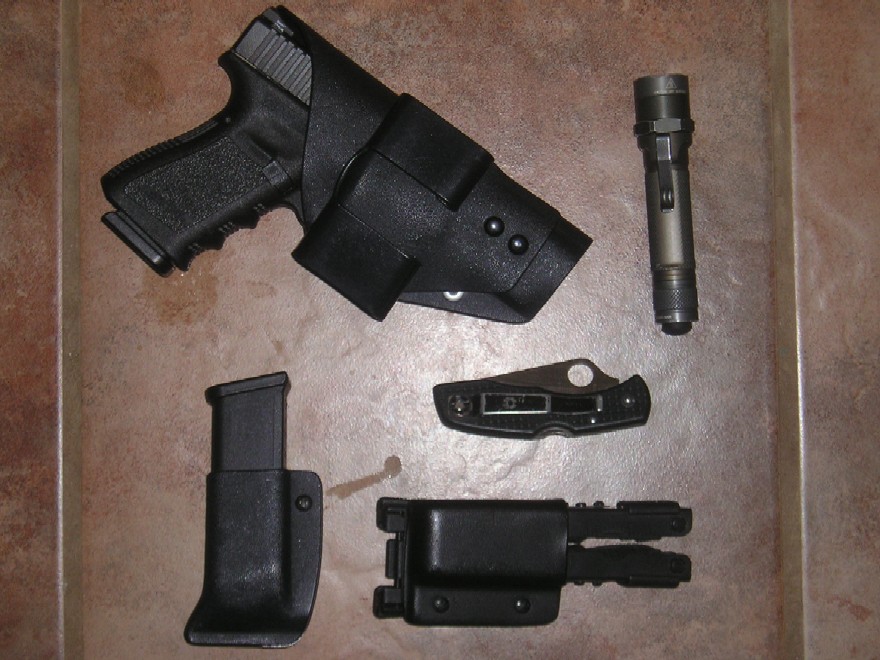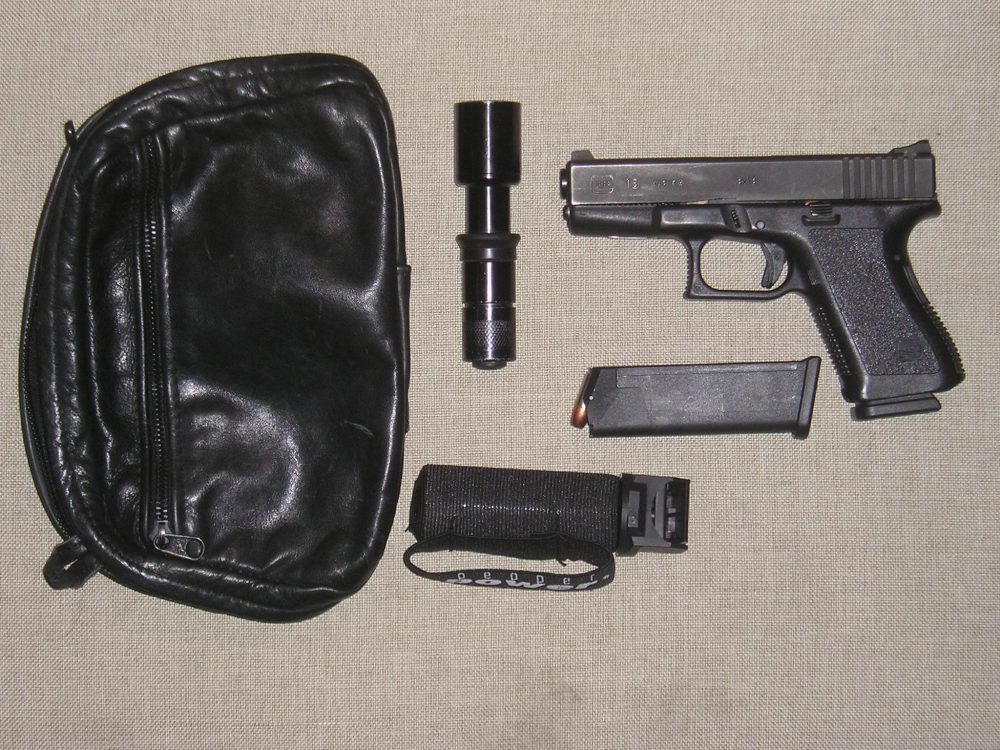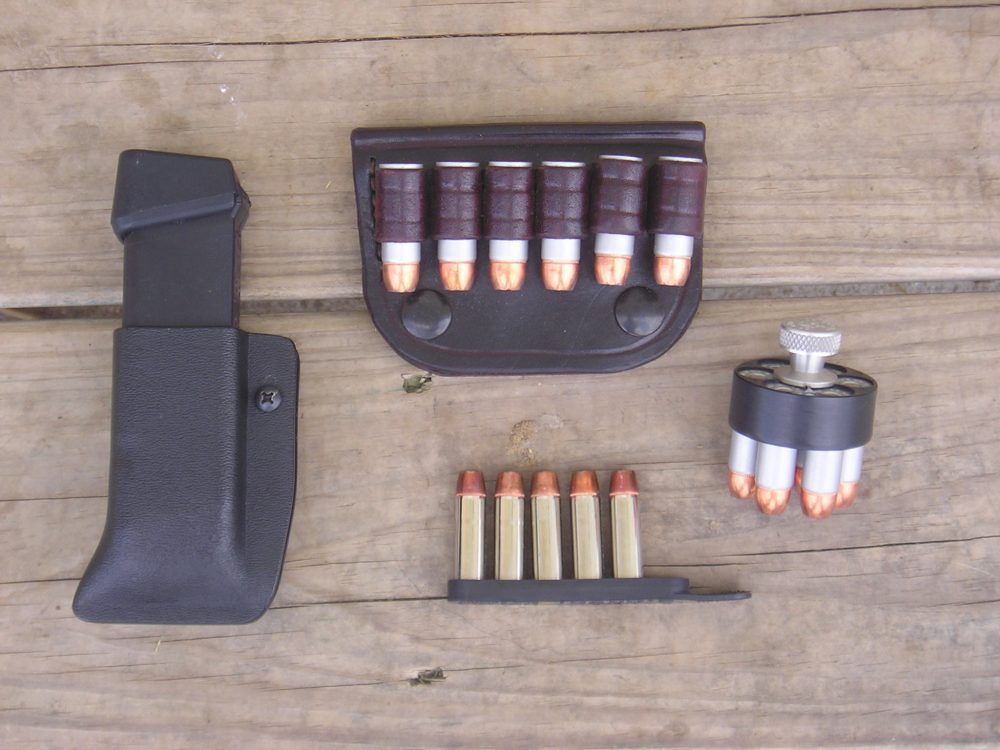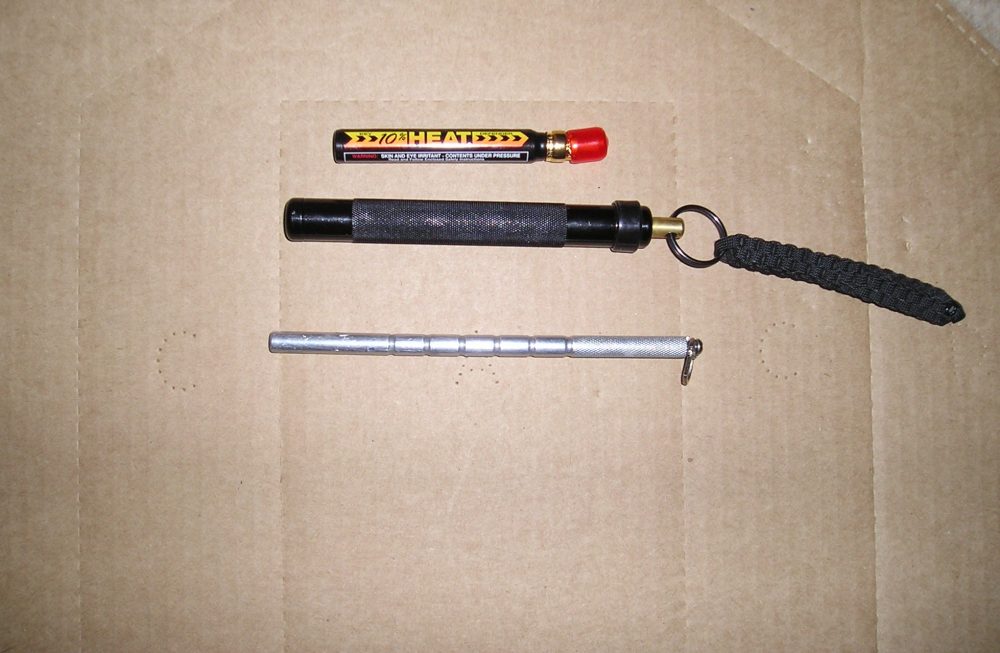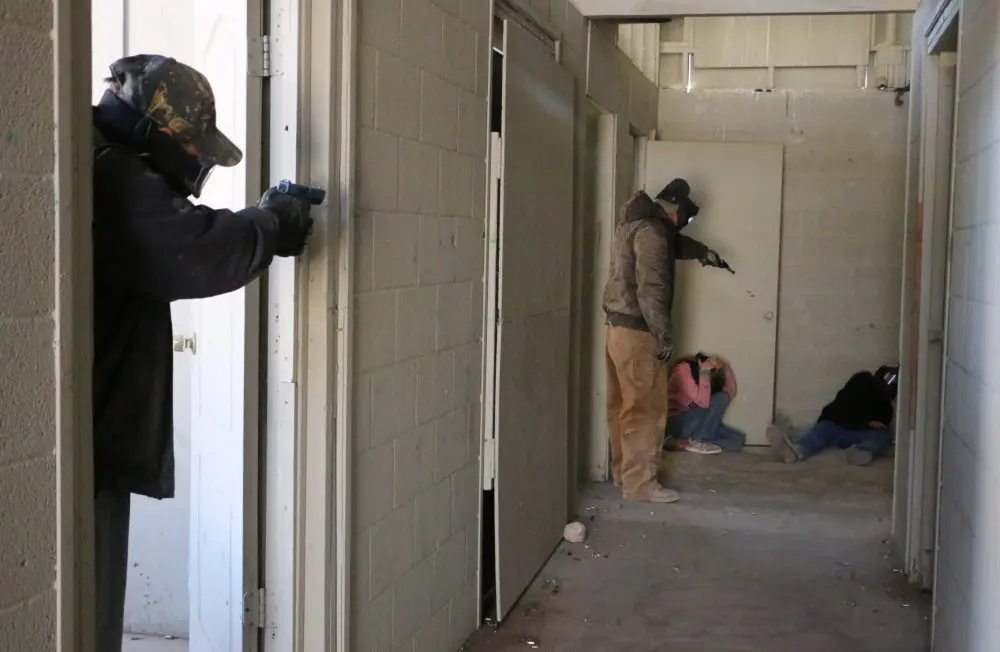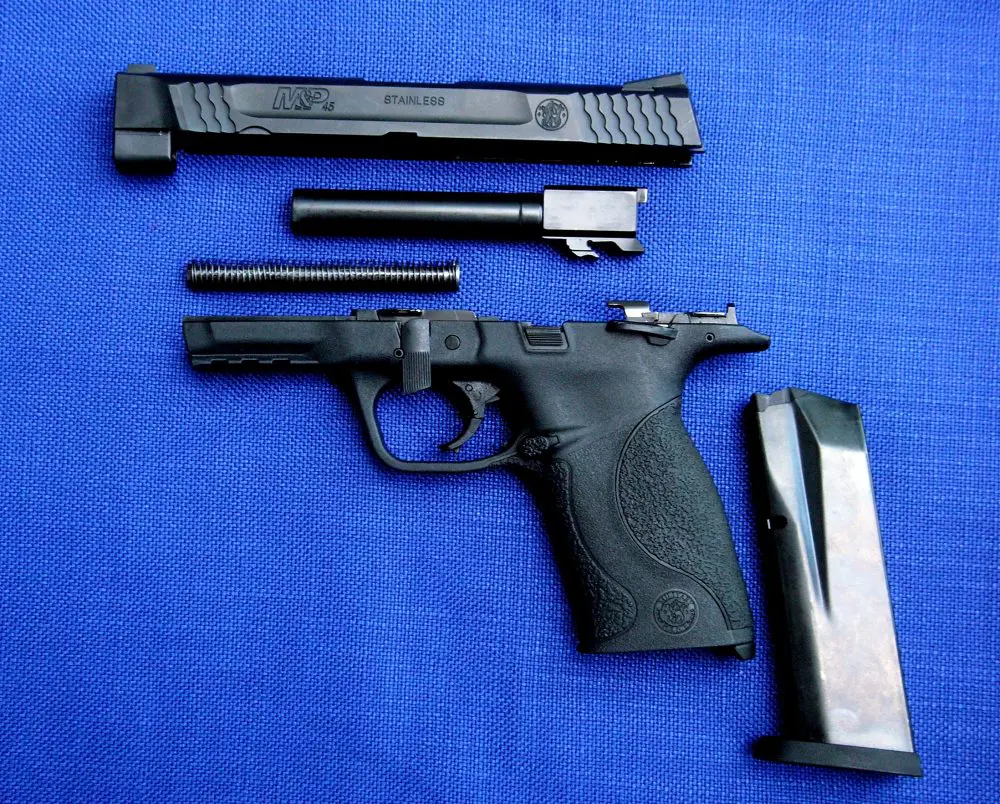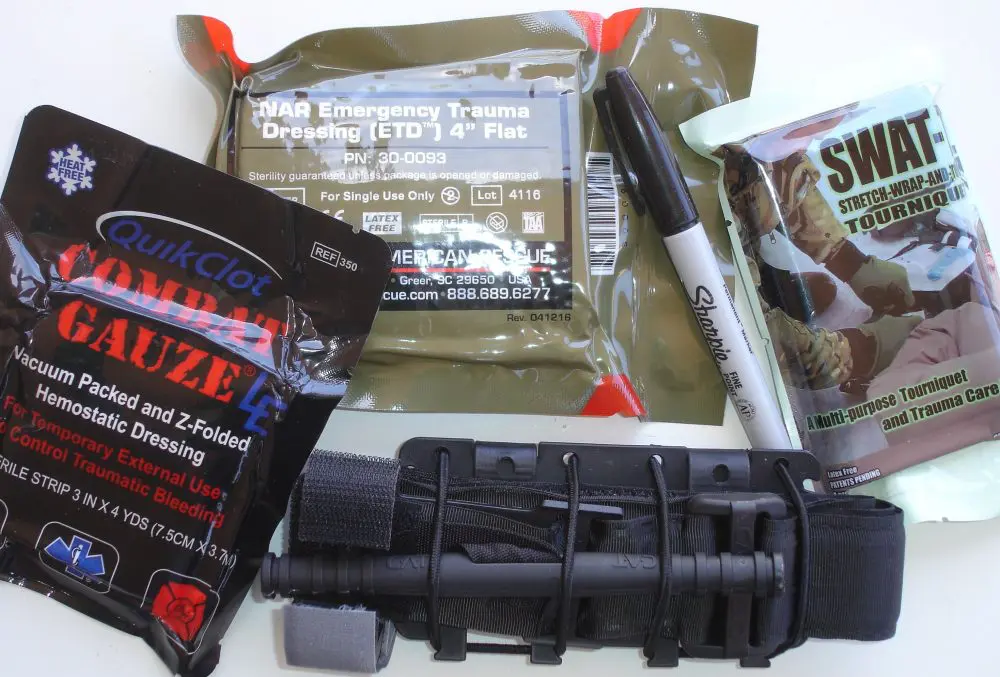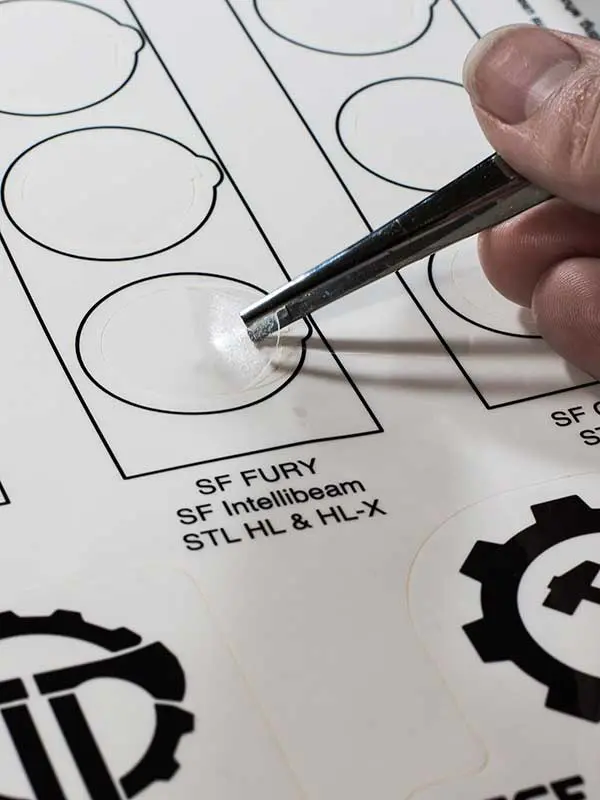One way to solve the problem of carrying spare ammo is to put it on the holster itself, such as on this Simply Rugged Loaded Pancake Holster for the Smith & Wesson Model 29 .44 Magnum.
The question of how much gear the private citizen should have with him on a daily basis is a difficult one. This discussion usually devolves into, “If you only carry this, you’re an idiot. If you don’t carry what I do, you’re a moron.”
That’s not the purpose here. What I want to do is widen your worldview. Look at it this way: We all make short- and long-term goals in life. We put energy into making sure our long-term goals come to pass, but keep most of our focus on the short term. The problem comes when we focus solely on the short term while ignoring the long term. The same thing applies to our choices in concealed carry gear.
Great everyday carry setup: Smith & Wesson Model 642 .38 Special wearing Barami Hip Grip and Tyler T-Grip adapter. Hip Grip allows carry inside the waistband without a holster. With a reload of five extra rounds in a Bianchi Speed Strip and Spyderco Delica folding knife, this combo can be carried anywhere with ease.
EDC OPTIONS
Some folks believe they can get by with a Snubby .38 revolver and no spare ammo, while others carry more gear than a SWAT officer. What’s right for you? The answer lies in your training and particular situation. What I carry and what you carry are two different things, and neither one of us is right or wrong. I carry certain guns and equipment based on my experience, and what I see as a long-term goal, so to speak. Others take a minimalist view, opting for a more convenient way of life, and see the short-term goal as the most important thing to focus on.
The new CCW holder is primarily concerned with making sure their pistol is concealed, they are legal to carry wherever they go, and they can hit the target when necessary. They will carry their gun and maybe a reload, since they are still getting used to the weight and feel of a concealed pistol. Their focus is the immediate protection of themselves and their families. That, in and of itself, is outstanding.
Another daily carry gear setup: Glock 19 9mm in appendix inside-the-waistband holster, spare magazine, Gerber Multi-Plier, Spyderco Delica folding knife, and SureFire E2E Executive flashlight.
As learning, experience and confidence build, the need for more equipment sometimes rears its head. A flashlight is never a bad thing to have, since it can be used on a daily basis for things other than gunfighting. For the tactically minded, this is usually a SureFire light, but even having a Mini-Maglite is better than nothing. A folding defensive knife is a good choice, since it can also be used for things other than self-defense. After that, what do you need, or think you need? And do you really need it?
There is the issue of having a non-lethal defensive tool with you as a supplement to your gun. This is usually pepper spray of some sort carried in a pocket or on a key ring. There is also the Persuader, which relies primarily on joint locks and nerve points to work effectively.
Depending on your work environment, these non-lethal devices may be your only means of defense, since many businesses don’t allow their employees to carry concealed handguns on the premises.
Easy-to-carry setup: Guardian Leather fanny pack, Glock 19 9mm with spare magazine, SureFire flashlight, OC pepper spray.
These non-lethal defensive tools require proper training to use effectively, and if you wish to carry them, you would be wise to get training in their use—otherwise they become little more than good-luck charms.
One item that almost never gets a second glance is the multi-tool, which has largely surpassed the Swiss Army knife as the all-around tool of choice. With so many shapes and sizes, from keychain to brick sized, there’s one for every conceivable situation. Is it a tool for defensive use? No, but much like the flashlight, it can fulfill many other functions. If you can fit one into your daily lifestyle, go for it. It also makes sense to carry a multi-tool or knife as a specific-use item—especially if you don’t use it every day.
BIG QUESTIONS
What I’ve talked about so far is not out of the ordinary for most people, much less those carrying concealed pistols. But what we’re moving into now is territory that will get 100 different opinions from 100 different sources. Remember what I said earlier—your training, experience and situation will determine what you feel you need to carry on a daily basis.
Different ways to carry your reloads include spare magazine pouch, Speed Strip, cartridge belt slide, and revolver speed loader.
Carrying a reload for your carry gun is considered mandatory in many training circles, and is generally seen as good advice not only for reloading during a fight, but also for having a new ammunition source to go in the gun in case of a malfunction. “But,” some will say, “my gun has never had a problem, and I’m not going into combat. I just want to protect myself and my family. I don’t need to carry two boxes of ammo on me!”
That’s true, depending on where you live and your situation. If you live in Miller, Missouri (population 700), you’re probably right. If you live in Memphis, Tennessee, having extra ammo is not a bad idea. A reload or two, plus extra ammo in the car, can be good insurance.
The backup, or second gun, is probably the most controversial item in the gun carrier’s inventory. There seems to be no middle ground—it is either viewed as extreme paranoia to carry more than one gun at a time, or it’s the height of true tactical awareness.
For many, it’s difficult to carry one gun at a time, much less two. Some are also concerned with the reaction of law enforcement officers if they find out, for whatever reason.
ASP Key Defender, shown with its replaceable insert, is a low-profile way to carry your OC pepper spray. De-jammer below it can be used for pain compliance holds or clearing malfunctions.
There are several valid reasons for carrying a second gun, such as your primary gun running out of ammo in the middle of a fight or having your gun break at the worst time. But if you don’t train with the backup gun and have it somewhere you can instantly access it when you need it, it’s just an extra three pounds you’re toting around every day.
If your situation is such that you can honestly see yourself needing a second gun, the best thing you can do is not tell anyone. Besides avoiding the disapproval of some of those you meet, why give up any tactical advantage that having the second gun gives you?
The goal of this piece is to make you think, not tell you what you have to do. At the risk of sounding like a wishy-washy politician, all I can tell you is “it depends.” Your choice of equipment is a personal one, and isn’t about being popular, politically correct or caring what other people think of you.
Carry what you want, when you want. Look at your end goals and do what you must to achieve them.
Steve Collins owns S & L Training in southwest Missouri, teaching concealed carry and defensive firearms and tactics. For more information on training opportunities, contact him at [email protected].
